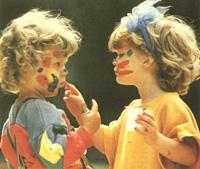Childhood and science
1992/02/01 Driver, R. Iturria: Elhuyar aldizkaria
If we asked children aged 13 to 14 what will happen if we throw a coin into the air, we would get the following answer: “Well, you give him strength and go up as long as the force lasts, then gravity is in charge of descending.”
According to an 11-year-old, the more a beach ball swells, the lighter it is because “the air is light and makes things float.” Since there is no air on the Moon that can carry magnetic force, the teenager argues that the magnet will never attract iron nails (see figure 1).
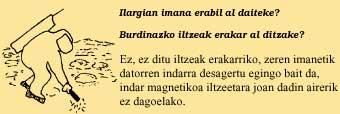
Here are some of the examples that schoolchildren can give about the physical environment. We experience in everyday life “taking sense” to common facts. It seems that the air has a “quality of heaviness”; in the water the bubble rises and the ball well inflated drops slower than the vacuum.
The informal ideas that the child has about natural phenomena and the documentation that studies the progression and development that occurs in these ideas during his schooling, have multiplied in the last 20 years thanks to the cognitive psychology and the professors of science. The statistical works that appear more and more often show that children, despite belonging to different cultures, may have similar informal models to a special phenomenon. In most cases, these informal models are far from the scientific ideas the child will receive in school, and sometimes they are counterbalanced.
These informal notions can also last in adults, along with the scientific ideas collected in school during childhood. If one wants to increase the results in the teaching of science, one must have as accurate a knowledge as possible of these informal models, not only of their existence, but also of their understanding and knowledge of their process.
More informal ideas that children have on mechanics have been analyzed. In 1979, in an investigation carried out by Laurence Viennot at the University of Paris, the young people of France, Belgium and Great Britain shared a survey on the movement of objects with the aim of knowing the path used by middle school students to relate strength and movement. If we have 6 balls like the ones used by the jugglers, one of them was the question about what happens in the different points of the tour if we throw all at the same height
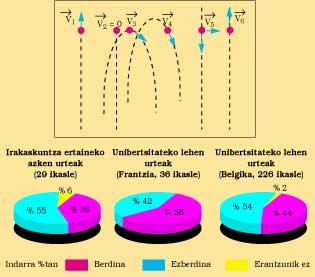
For many, the speed of the object depends on the applied force; the fact that the moving object has a force that keeps it as such shows us that it is a natural response, which has not been learned. The moving object, with a first thrust, has an “internal force” that moves it. However, this “internal force” is “exhausted” or “exhausted” at any given moment, finally dropping the object to the ground. This type of reasoning facilitates the understanding of cases of constant movement, as is the case in which a paratrooper drops at constant speed after jumping or when a cyclist pedals at the same speed.
In short, it is a reasoning that makes one think that when the force exercised on any object in the same direction of the movement is greater than that exercised against the direction, the object will not stop. Interference occurs between what is taught and what is learned informally. However, many children can integrate the new experiences and concepts learned in school among those who already have acquired them, if, according to the new information, they adapt them. For example, the child's opinion on food is limited to the substances necessary for the animal to live. In the case of plants, this notion extends to those that feed on water and nutrients from the roots. This notion, while not expressly worked, will interfere with the concept of photosynthesis.
However, these children's informal notions evolve with age. If you were to ask where the light is in the classroom to a 5-year-old child, you would identify the light with the light source (bulb or window light), or with the light effect (room lighting). If the child is older, it will identify him with something that is in space. The child believes that when light is lit, the room is filled with the light needed to see things.
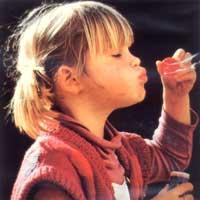
As you approach adolescence, your concept of light changes. He suspects that the light goes from one place to another, that is, it goes from one tap to another until it comes to light things. However, in this process of conceptual assimilation it is difficult for them to become aware of the relationship between light and vision. Some children, to explain why things look, turn to the “rays” that come out of their eyes.
To explain why he sees a box in front of him, the 13-year-old uses both notions. On the one hand, the notion of light rays that occur from somewhere and on the other, the notion of rays that occur in the eyes: “The eye sees it like this…, it comes out like this (it draws the rays that come out of the eyes). The eyes do not have their own light, but if they have light that turns on when you have to see things” (points out the outside light that illuminates the object being seen).
A study in Sweden analyzed the reasoning used by the child to explain the relationship between light and vision (see figure 3). Few children think that light can reach more than the viewer can perceive.
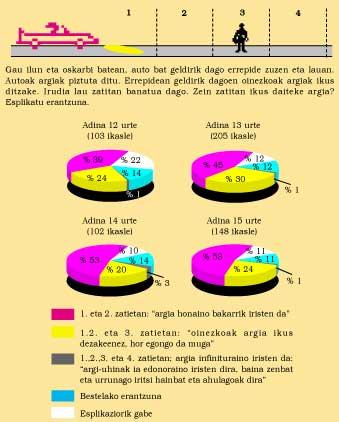
In the works in which the causes of children about the world and gravity are investigated, interesting intercultural comparisons can be found. In the first perception, the child is asked to clarify how the Earth can be interpreted as a sphere. In an investigation carried out in 1976 at Cornell University in Itaka, Jo Nussbam identified with drawings and models five basic notions of the reasoning of young people from 7 to 14 years. The ones identified by Nussbaum range from the notion that the world is launa, going through the notion that life is a sphere in which it is possible and comes to say that it is a spherical world with gravity that attracts the center.
Relevant theories Relevant theories
The Research Group for Childhood Learning at the University of Leeds has analyzed the ideas that the child has on these issues. It was about finding out what you think about the materials the child sees and uses on a daily basis, such as water, metal, plastic and air, as “continuous matter” or as a small part. They wanted to know what they think about the processes involved in the appearance and disappearance of matter, such as condensation of the window or dissolution of sugar in tea.
The child has informal notions about the matter and its composition in the early years of school. To explain what happens when a substance is dissolved or dissolved, the child says that this substance is made up of small “parts.” However, if these small fragments are enough to think that, despite being microscopic, they maintain the physical properties of the substance, such as color and temperature.
The idea of the child about air and gas suffers interesting changes depending on age. In order to know what they think, children from 5 to 6 years old were asked to make a plan of their room and then paint the place that occupies the air. In the drawings, the surroundings of the windows, the doors and the lines that wanted to indicate the air that leaves the mouth of the people were painted. At this age they understand air as a breeze or current; children have not assimilated the concept of motionless air in all its surroundings.
This change occurs around 7-9 years when the child is forced to know that there is air. For example, when entering the water face down, you realize that it is not filled with water.
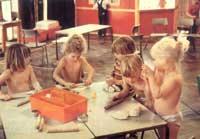
At this age, the child believes that air is a type of material, invisible and weight-free even if it is in space, or has a maximum negative weight. In later years, from a scientific point of view, the child perceives that air has weight.
In some times the child also thinks it is the necessary means for force to influence a certain distance. In his opinion, gravity is not enough for objects to collapse into the vacuum tube; something similar would occur on the moon, since they consider that when there is no air the magnet will not attract iron nails.
The researchers have come to say that some informal notions remain despite the years. Nor should we forget that in the development of these ideas the child builds intermediate models, among which are the negative weight of air or the consideration of light as a notion of “filling of room”. These intermediate models are out of what the child directly perceives. The child also acquires new concepts, such as light in space or air as a substance. These models of means used for reasoning reveal to children how the environment moves or how it works. Some research has shown that the adoption and use of these informal models is easier and better than those scientifically recognized by some.
Common Intercultural Concepts
The most relevant conclusions of these research have been the models used by children of different cultures and the similar results found in their age progression. These models come from the relationship of the child's experience with physical phenomena. This will help the child predict the facts and adjust the attitudes needed to face the physical environment. Finding common features in children's models should not surprise us.
Although language and natural environment are different, the process of understanding the physical environment follows the same path. Collecting and throwing things, manipulating materials, seeing light and shade, the lived experience helps to assimilate informal models, often unexpected. The child’s “instinct” makes informal notions and experience “coincide”, making it difficult to understand concepts related to formal science.
Taking into account these research around the informal theories of children, teachers who teach science begin to recognize that by the time the child begins to study a scientific phenomenon in school, he has an informal idea about this fact. In the surveys and interviews with young people in the science class, we are shown that the child cannot abandon the notions he already has and simply assimilate what science says, even if the teacher tries. It is necessary, therefore, to begin to break the path towards an education that takes into account informal notions. As for learning the sciences, do not forget that the child does not learn new information, but reorganizes what he already has.
These works will have a direct impact on curricular planning. The research carried out with children and young people emphasizes the need for certain informal models for the advancement of child reasoning. The information we have about these models (know their frequency and sequence in different ages) are basic conditions for the elaboration of the curriculum. The elaborate curriculum will ensure, on the one hand, that the informal notions that the child has will be oriented and, on the other, that, being adapted to his level, he will receive with enthusiasm and immerse in him the science that will inform him of the physical environment.





